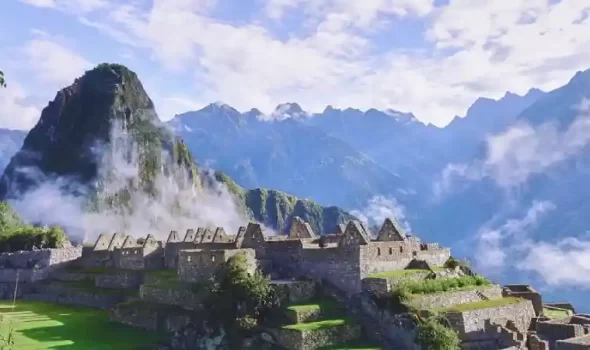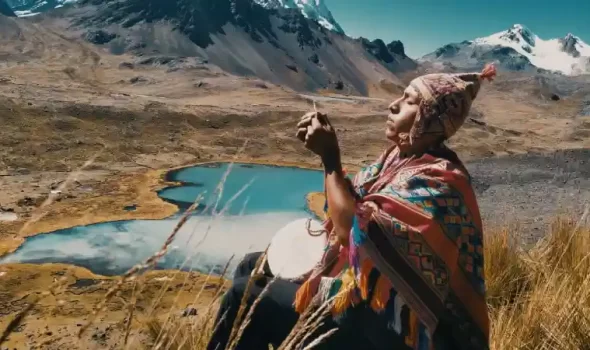If we had to choose a single site in Cusco that summarizes the extraordinary works of Inca hydraulic engineering, that site would undoubtedly be Tipon. Here we find terraces of exceptional quality that include a complex irrigation system. Tipon is a National Archaeological Park since 1984, has an area of 239 hectares and is a multifunctional Inca llacta as most of the most recognized Inca constructions, although Tipon may have been more associated with religion.
Let’s review some of the details of this Inca site considered a masterpiece of Inca hydraulic engineering with Auri Peru Travel.
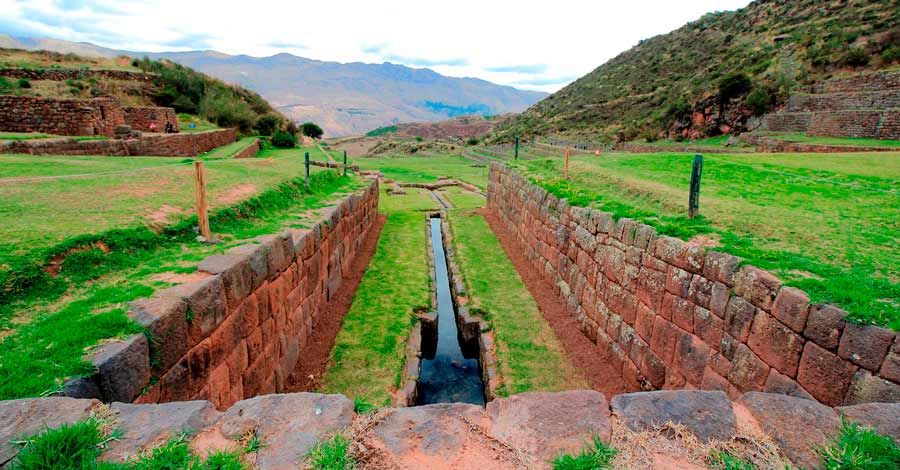
Location and altitude of Tipon
Tipon is located very close to the town of Oropesa about 21 kilometers south of the city of Cusco, accessed by a zigzagging road. Tipon is located within the community of Choquepata in the district of Oropesa in the province of Quispicanchi. Tipon is located in a volcanic area, exactly on a slope that goes from 3500 to 4000 meters above sea level.
Meaning of the name Tipon
According to the opinion of Dr. Luis A. Pardo, the name Tipón may be derived from the Quechua word “timpuj” which means “to be boiling”. This denomination could be coined to the fact of the gushing of the waters in the fountains that makes it seem as if the water was boiling.
Some chronicles mention the name Qespekancha, which could be the real name, to designate the entire archaeological complex. According to the Quechua dictionary of Gonzales Holguin and breaking down the original term “quespi” translates as glass or thing that translates; Kancha translates as courtyard or corral. So Qespekancha, forcing a little the translation would be “translucent patio”. Probable name of the place because some chroniclers point out that this was the name of this place.
Tipon Weather
Tipon is located between 3500 and 4000 meters above sea level, within the ecological zone known as suni and puna. It has two well-defined seasons: dry season (April to November) and rainy season (December to March). The average annual temperature varies between 12 and 24°C during the day, and is cooler at night. Both of them depend on the season.
Brief history of Tipon
The valley of Pinagua (Tipon) or southern valley as it is known for tourism today, was home to important human settlements since ancient times. There is archaeological evidence that the first inhabitants of Cusco, the Marcavalle, settled in this valley around 1200 BC. It would later be the home of the Chanapata, Huaro, Qotakalli, Wari, Killke, Pinagua and Inca cultures until the arrival of Hispanics.
Maria Rostworowski identifies the Killke ceramics (a low quality ceramic) as belonging to the Pinagua ethnic group that would have inhabited the valley upon the arrival of the first Inca, Manco Capac. The Pinagua were associated with the Ayarmaca ethnic group, which widely inhabited the areas north of Cusco and extended over part of the current Sacred Valley of the Incas.
The Pinagua would have fought constant battles with the Inca ethnic group during the initial expansion of the Incas in this valley south of Cusco and it is also believed that the place that is now Tipon would have been the capital of the Pinagua.
Already in Inca times, unlike most chroniclers, Garcilazo de la Vega, refers that the Inca who performed the greatest historical feats and left great architectural and engineering feats was Wiracocha Inca. The great majority of chroniclers agree that it was actually Pachacutec. However, taking Garcilazo version, it is said that Wiracocha ordered to build a royal house between Angostura and Mohina (Huacarpay). This place was a pleasant place with orchards, gardens and royal entertainments such as hunting and fishing.
The historian Victor Angles Vargas identifies the place of Garcilazo’s description with the current Tipon, which would have been ordered to be built to be the residence of his father Yahuar Huaca after the end of the Inca-Chanca war, which according to Garcilazo version had Wiracocha as the protagonist. There are no more references about Tipon in the rest of the chronicles.
Tipon could also be the ninth huaca (fundamental sacralities in Inca times) of the fourth ceque (system by which all the huacas were structured), system that was described extensively by Polo de Ondegardo. Therefore, Tipon would have been a very important religious sector as can be seen in its infrastructure to this day.
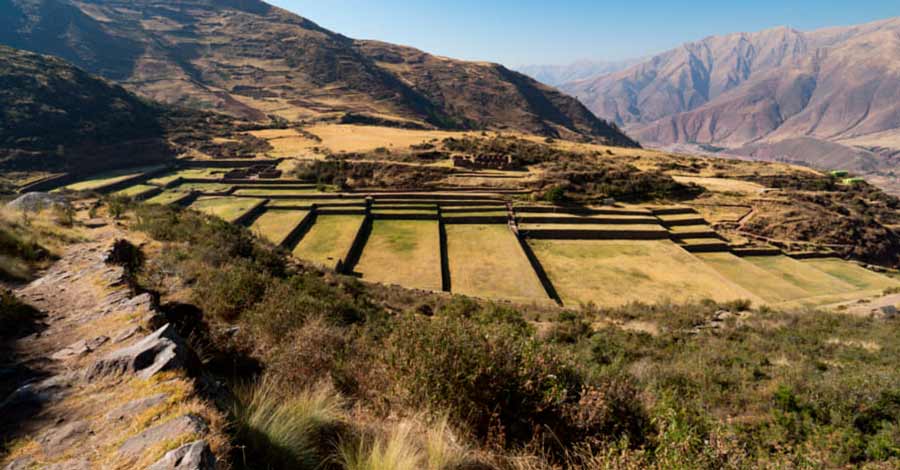
The function of Tipon
The function of this complex system is believed to be to perform ceremonies in order to sacralize the water before fertilizing the mother earth or Pachamama. Tipon also functioned as an administrative center with religious and agricultural functions.
Tipon, a masterpiece of hydraulic engineering
One of the most logical reasons for the construction of the Inca site of Tipon in its present location is obviously the natural spring that flowed down the side of this mountain. The springs gush out of the ground or between the rocks as a result of filtration of water from rain or thawing.
The eye of water or main spring of Tipon is located to the northeast of the whole complex, it is built in such a way that it is capable of supplying water to almost all the agricultural terraces as a simple effect of gravity. But before reaching the lands to be irrigated, it moves through a main fountain that has four striking jets.
The main fountain
It is a succession of fountains articulated by a matrix channel that originates to the northeast. The characteristic of this fountain is that the main channel bifurcates forming 2 waterfalls or “paqchas” that then join together in a “Y” shape. After joining again, they divide into 4 waterfalls. The waters then join again to irrigate the entire area of terraces.
Such a precise and spectacular layout makes this fountain a very curious spectacle. Some theories affirm that the channels in this sector, before joining in “Y” could represent the duality of the Andean world (the yanantin), the physical union of the channels would represent the “tinkuy” and finally the four partition of the water would represent the 4 Incan suyos (Chinchaysuyo, Contisuyo, Collasuyo and Antisuyo).
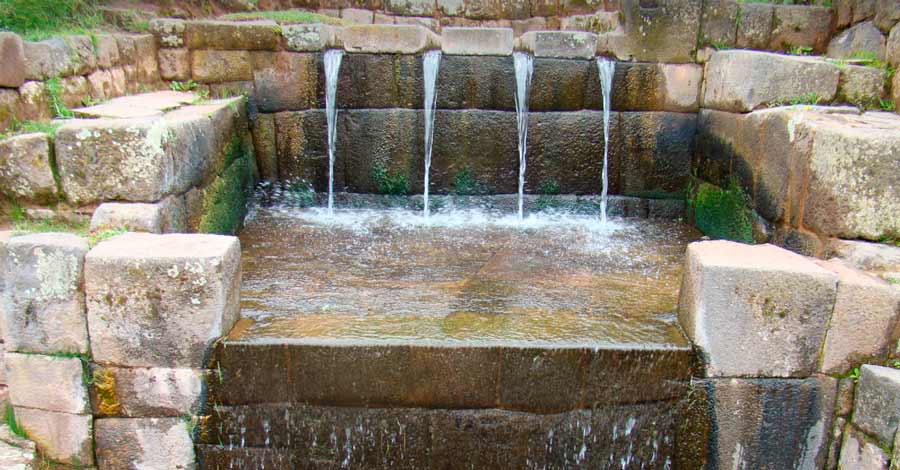
Sectors of Tipon
The inca terraces of Tipon
Tipon consists of thirteen platforms that are located on a very little pronounced ravine in a northeast to southwest orientation. Its terraces are U-shaped, a characteristic that makes it very unique compared to other Inca sites. Each terrace or platform has its own system of canals, irrigation aqueducts, embankments and retaining walls. The retaining walls of each platform have stones embedded as steps (sarunas) to move from one terrace to another. Most of the lithic material used in these terraces and constructions in Tipón is andesite stone.
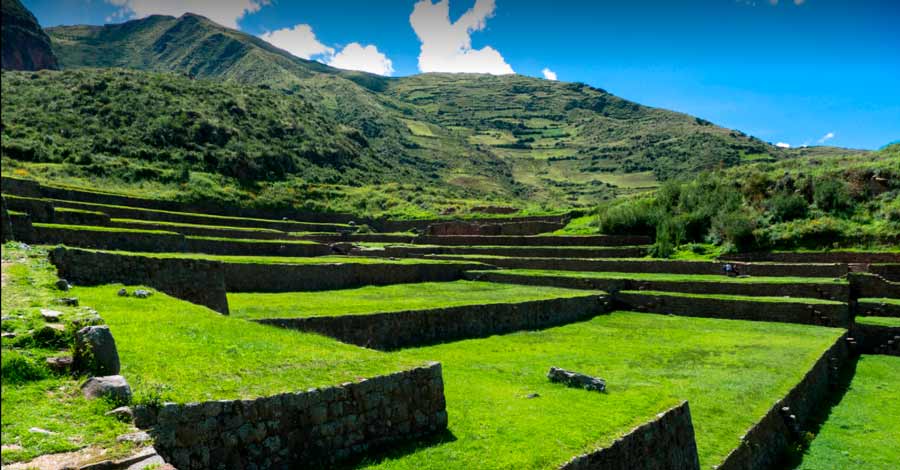
Sinkuna Kancha
This complex is located on a rocky promontory, it is generally considered a fortified neighborhood or the security center of Tipon, according to some theories these enclosures could have housed up to 50 people. Its enclosures are rectangular with courtyards and trapezoidal niches.
Ceremonial plaza of Tipon
It covers an approximate area of 700 square meters. It is believed that it was a ceremonial plaza that complemented the functions of the intiwatana. The Incas performed their ceremonies in open spaces, just as the Andean man does nowadays, as opposed to the European idea of doing it in closed spaces with a roof.
Intiwatana
It is located at a higher altitude on a mountainous elevation that protects the whole complex. These are ceremonial structures with trapezoidal openings and structures with several jambs. The enclosures are of very good quality and it is believed that they fulfilled religious and astronomical functions. The windows and niches have alignments with the rising and setting of the sun at solstices and equinoxes.
Aqueduct of Tipon
This is a great feat of Inca engineering, it is located upstream of the Intiwatana. It was built on a rocky outcrop, it is 60 meters long and 4.6 meters high. Its purpose was to capture and transport the waters of the Pukara River to irrigate the terraces of the lower Tipon area.
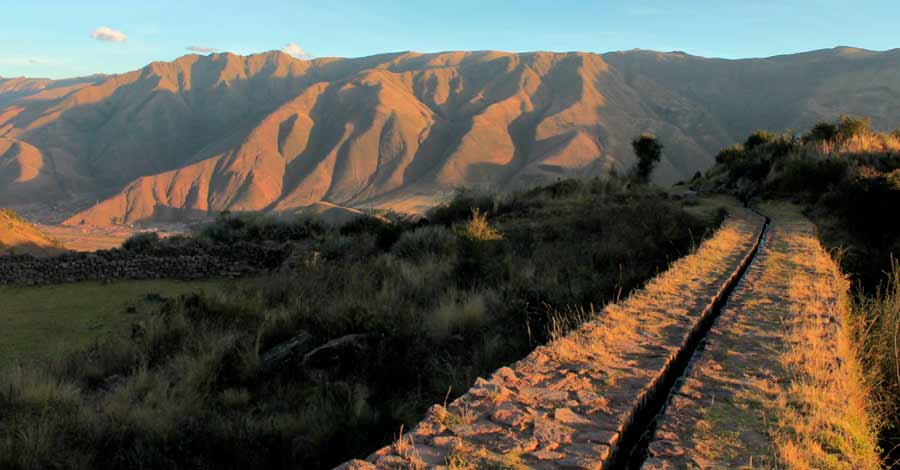
The wall of Tipon
It was built with the purpose of protecting the enclosure of the constant wars that were fought in times before Pachacutec, before the Inca unified the taguantinsuyo subjugating the other ethnic groups. It is likely that even the origin of this wall is pre-Inca. Its elaboration must have taken many years of work due to its gigantic dimensions. Some historians presume that its construction is attributed to the Killke culture, Pinagua or the Wari culture, the latter built perimeter walls in their administrative centers such as the case of Pikillaqta, near Tipon.
The viewpoint or Cruzmoqo
Cruzmoqo or “Summit where there is a cross” is located in the northern part of the Archaeological Park and can be seen with the naked eye because it is the highest orogenic prominence when entering Tipon. From its location you can see the western part of the city of Cusco. The water that feeds the entire hydraulic system of Tipon has as its main source the subway spring that emerges from this mountain.
The actual village of Tipon
The town of Tipon is located on the turn off the main road before turning off to the archaeological site of Tipon. This town is dedicated to the preparation and sale of Andean guinea pig. An Andean dish that is traditionally prepared in the oven and is accompanied by a stuffed rocoto and baked potatoes. In the town of Tipon we will find many options based on guinea pig, dishes for which this town is very famous regionally.
How to get to Tipon from Cusco?
The archaeological site of Tipon is located about an hour’s drive from the center of the city of Cusco, about 24 kilometers south on the tourist route known as South Valley.
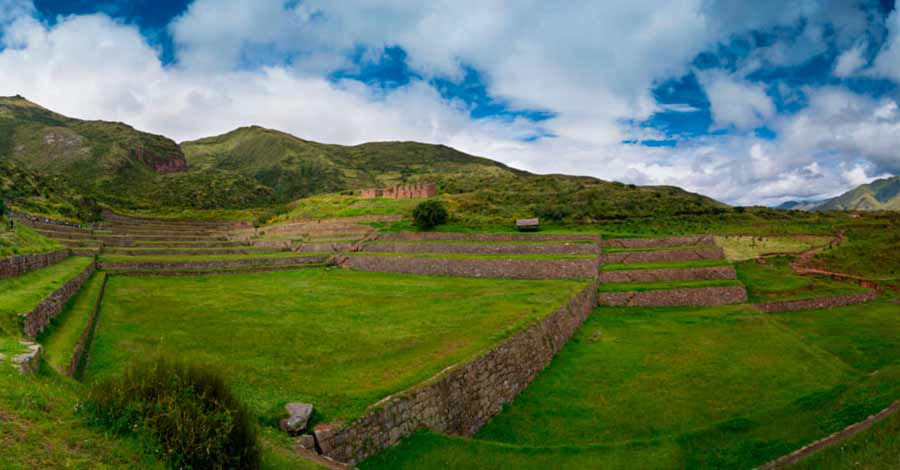
Arriving Tipon on your own
To get there on your own, you should take public transportation to the town of Tipon (Saylla-Huasao, Saylla-Tipon-Oropesa companies). The trip from the center of the city should take a little over an hour to the town itself. Once in the village there is still a distance of about 4 kilometers uphill to the archaeological park. The uphill hike should take about two hours. It is advisable to take a cab from the town of Tipon, the cost should not exceed 10 soles.
Arriving Tipon with a travel agency
The option of arriving with a travel agency is more practical and comfortable because the transportation goes directly to Tipon and complements the visit with other archaeological sites. As we have mentioned throughout this article, this route is known as the southern valley route.
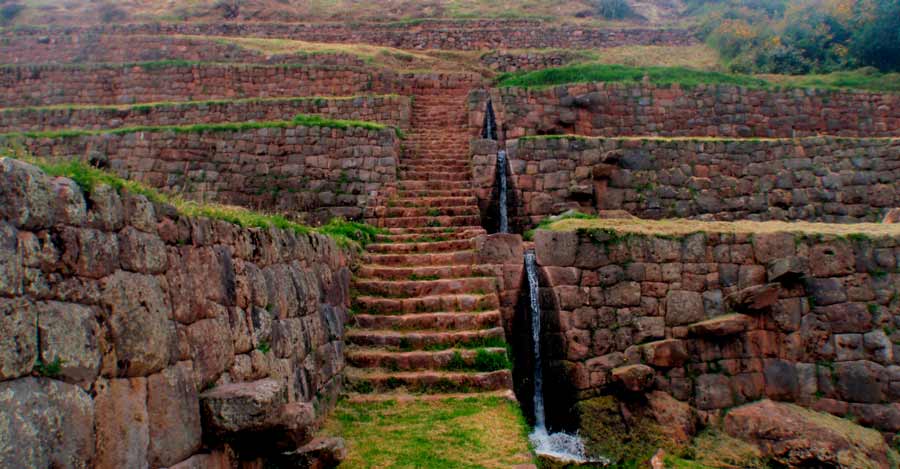
Peru has many incredible places to discover. With many years of working in the travel industry, Auri Travel is happy to help with your travel plans to Machu Picchu and other places around the country. Come and enjoy your Peruvian Adventure with us!







